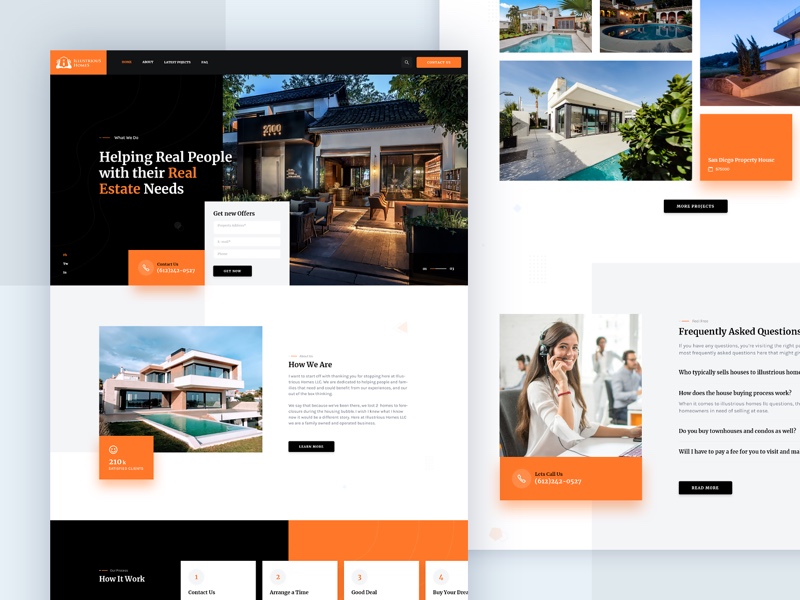
Websites are used for many different purposes. The site can be used to sell products or provide entertainment, for example. Regardless of individual purpose, websites need a steady hand at the helm for good design. Here is some great web design advice.
Try using fixed-position navigation to let your users navigate with ease. This technique involves locking a site’s navigation panel in place as the visitor scrolls down the page. Not only is this convenient for your visitor, but it can also help internet marketers by facilitating any action for visitors (e.g purchase a product, subscribe to a newsletter).
Allow your users the ability to cancel something if they are not happy with what they typed in. For example, put a “clear” button on a form, an unsubscribe link on all newsletters and a “cancel” button on orders. When you do not allow visitors to cancel something they do not wish to complete, you are forcing them into something, which can prove detrimental to fostering return visits and/or purchases.
Stay away from using pop-up ads. There is not a person out there who will want to visit a website and get overwhelmed with pop-up ads. Your customers will agree that if they visit a site, and are overwhelmed with pop-ups, they’re likely not to return. Just avoid these irritating ads, so your users will be happy. If your webhost places their own popup ads on your website, it is time for you to change your webhost.
Keep your topics separate. Keep different topics on different pages. This will reduce visitor confusion and facilitate readability by the search engines.
Design your front page to be a minimal as possible. Internet shoppers do, indeed, judge your site by its cover. Describe your business and offerings but minimize distractions on the page.
White is a great choice for a background color. It’s simplistic, yet has a lot of potential at adding flare and color elsewhere. Content is generally more readable on white backgrounding, and this makes your page look both more professional and trustworthy. Complicated background designs on the other hand can be distracting, and can make your website feel less professional. It is usually preferable to have a simple background.
Make sure you test your site early and often. It’s very important that you carry out your site’s user interaction and usability tests as early as you can in the design phase of your website. Make sure to keep improving and testing it as your website continues to grow.
Hosting your site yourself isn’t recommended, even if you might have invested lots of money into it. Having an experienced team of experts running your server for you, including upgrading the software and dealing with hardware failure, will leave you time to focus on your site itself.
Begin by making smaller websites, so you can see your strengths and weaknesses before starting a major site. Start out by making a few pages that just have basic information and some easy text, then asses how it works for you.
Always spend a few minutes proofreading content before posting it to your website. This will make it easier for people to read. When you have errors on your site it really looks unprofessional and people won’t take you or your site seriously which can hurt it’s reputation.
Find out from your targeted audience what they might like to see when visiting your site. You can use this to help with your site’s design and to put features on it. Knowing the preference of your intended audience is important when it comes to site design.
Write content based on the literacy level of your readers. There are differing levels at which people read and you will not want to approach all visitors as if they have had a college education. Your content is useless to your visitors if they can’t understand it.
When it comes to posting important information on your website, place it high and far to the left. People typically read from the left to the right, so anything high and far left is going to be the first thing that catches their eye.
Utilizing free stock images on your site will stretch your budget. These images are often high quality and can be found all over the Internet. Saving money when it comes to the images you plan to use means that this money can be used to help you with other aspects of site design.
Most websites do well with a neutral background color. Visitors may become overwhelmed by textured backgrounds. If not used properly, your site will look like you do not know what you are doing. White or beige will do fine. Most people believe that neutral colors make it much easier for the eyes to read a website.
Web Design
Maintain some hunger and desire for new web design ideas and information to stay on top of your game. Things change quickly, and you need to keep up with the process. Checking out web design blogs to help you know what is going on in the technology world.
Providing sharing links can help visitors spread your information around on social networks. It will allow them to show their friends the great information they’ve found while bringing you increased traffic.
If you want to create a website, stay away from VPS hosting and use grid or shared hosting. That is because you don’t know how many visitors your site will attract, and you want to avoid overpaying or underpaying before you have a good idea of what your hosting needs will be.
Websites are incredible useful and are used for blogging, business and entertainment. However, the specific focus of a website does not matter to who designs it. Apply the tips here, and you can design a website for any purpose you want.